Digital transformation fuels energy industry
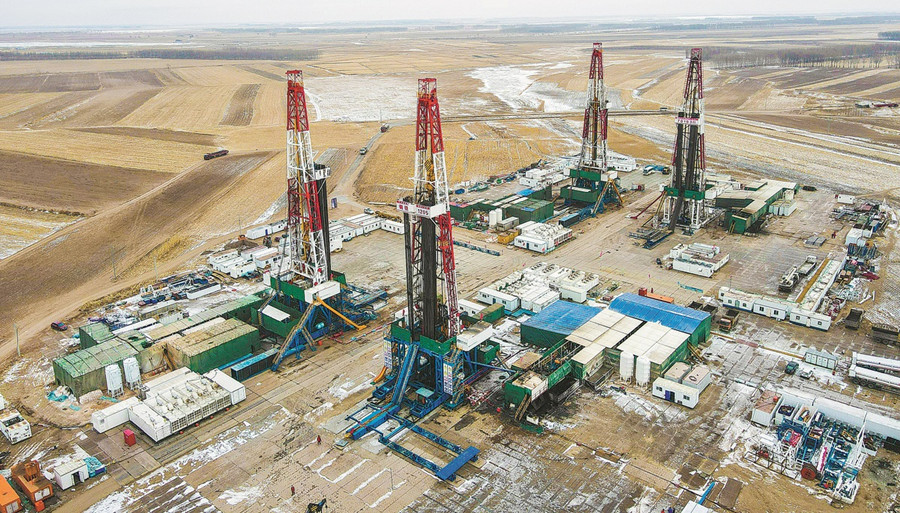
Daqing Oilfield Co in Heilongjiang province has emerged as a pioneer in digital transformation, according to experts. [Photo by Li Haiyang/For China Daily]
Wider use of technologies benefits daily operations
Shi Wenbin, a 57-year-old oil worker, knows only too well how bitingly cold it can be in Daqing, Heilongjiang province, in winter, when temperatures often plummet to -30 C.
Describing a winter patrol of a 3-square-kilometer operational area at a local oilfield, he said: "Amid the freezing cold, I and at least 14 colleagues had to inspect oil wells scattered throughout the patrol area every morning and afternoon. Each time, it took us four hours and we walked more than 10 kilometers a day."
Shi, captain of an oil production team at Daqing Oilfield Co, a subsidiary of China National Petroleum Corp, and his team have worked in one of the nation's largest oilfields for years, regardless of weather conditions that include snow, rain and extremely high wind speeds.
But now they have an efficient helping hand, thanks to the pioneering use of digital technologies such as drones, 5G, the internet of things, big data and video surveillance in and around the oilfield.
"Drones now patrol the operational area four times a day, and we only arrange for about six people to do additional inspection work every three days. The technology has greatly reduced our workload and the risk of injury," Shi said, adding that ditches and swamps within the patrol area pose a danger to manual patrols.
Shi is just one of the rising number of front-line employees at the company benefiting from the wider use of digital technologies in their daily work. The oilfield, which is more than 60 years old, has been quick to embrace cutting-edge technological solutions to revitalize its production and management.
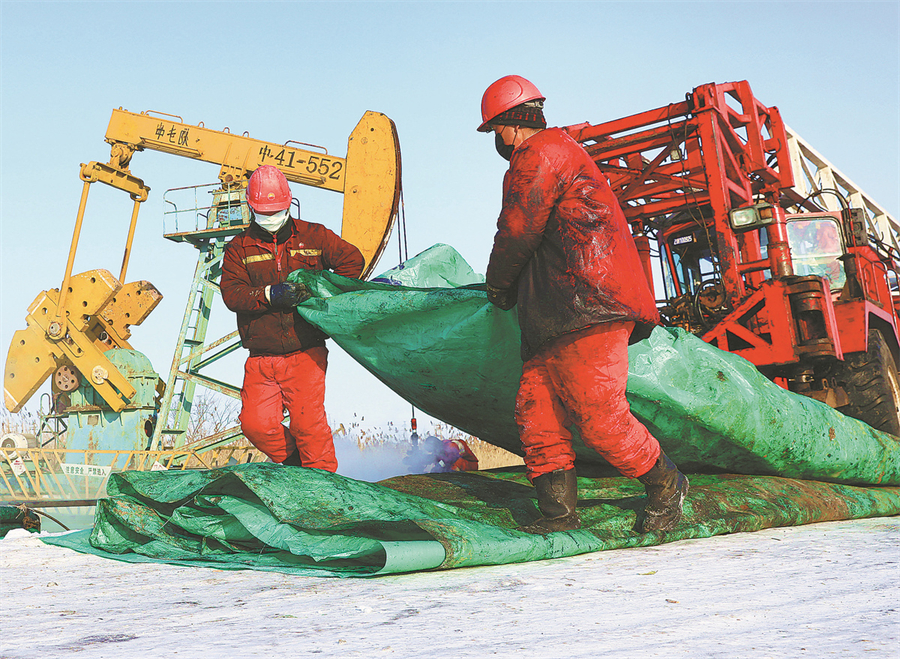
Workers prepare to move to another production site. [Photo provided to China Daily]
Experts said that by producing some 2.4 billion metric tons of crude oil since 1959 and witnessing the nation's rapid industrialization in past decades, the oilfield has emerged as a pioneer in digital transformation, offering a glimpse of how China's sprawling energy industry is eager to continue innovating in a fast-changing environment.
Li Kai, vice-president of the China Academy of Northeast Revitalization, a think tank, said such progress also shows how Heilongjiang, which is home to old industrial bases such as the oilfield, is aiming for a makeover as the digital economy becomes a new growth engine for the northeastern region.
President Xi Jinping has stressed the need to prioritize independent innovation and foster an environment for innovation to improve China's industrial level and strength as the nation advances a strategy to revitalize the northeast in the new era.
In remarks made during a recent trip to Liaoning province, Xi, who is also general secretary of the Communist Party of China Central Committee, expressed full confidence in and high anticipation for the revitalization of the northeast.
Cheng Jiecheng, an academician at the Chinese Academy of Engineering, said that as the global energy industry faces comprehensive and profound changes, Daqing Oilfield Co is banking on digital transformation to promote management and technological upgrading, not just to meet present needs, but for future development.
Great contribution
As an important oil and gas manufacturer, the company has produced 150 billion cubic meters of natural gas to date, making a great contribution to ensuring China's oil and gas supply security, and supporting development of the national economy in the past 60 years, Cheng added.
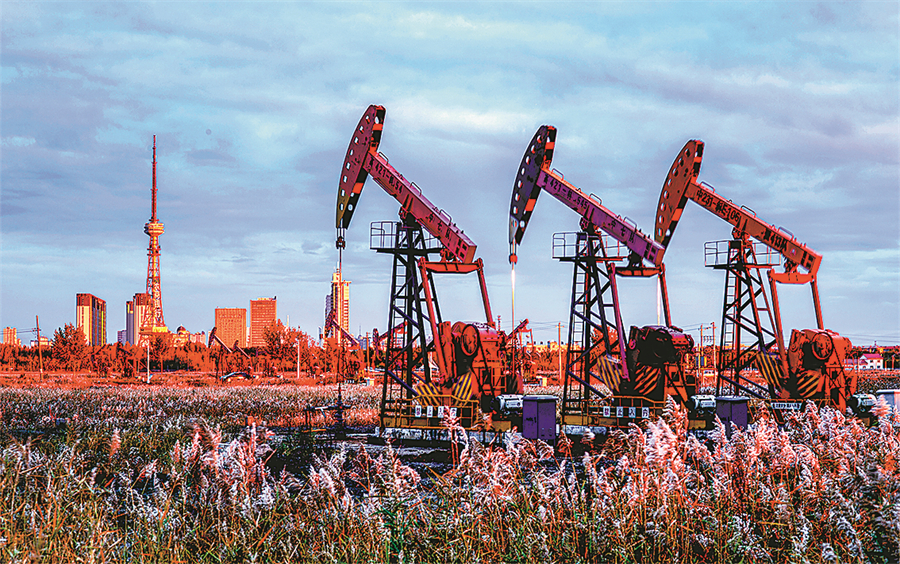
Oil derricks operate at Daqing Oilfield Co. [Photo by Zheng Yong/For China Daily]
But as oil exploration becomes more complex, there is an urgent need to strengthen on-site management and improve production control with the help of new technology to boost productivity in an all-around way, said Cheng, who is also chief technology officer at Daqing Oilfield Co.
"Against this backdrop, we are vigorously promoting a three-step strategy of building a digital, smart and intelligent oilfield, with the first goal of a digital oilfield starting to take shape," Cheng said.
He added that the company has built a "smart brain"-a command center where technicians manage and control 120,000 oil and gas wells, 8,100 oil and gas stations, 100,000 km of oil and gas pipelines, and 30,000 km of electricity lines.
This is in sharp contrast to the situation in 1959, when the oilfield had just been discovered and the company's "command system" was nothing more than a telephone in a mud building.
Now, nearly 500,000 internet-connected devices to collect data are operational at the oilfield, and more than 10 billion sets of real-time data flow online every second. In the future, the data volume will see exponential growth, and more efforts are needed to improve the ability of data governance and data mining, Cheng said.
Daqing Oilfield Co's plan to build smart oilfields is also part of broader push by China to advance innovation in the traditional industry. In January, the National Development and Reform Commission, the nation's top economic regulator, and the National Energy Administration jointly released a 14th Five-Year Plan (2021-25) for the energy sector.
The plan calls for the wider use of 5G, artificial intelligence, cloud computing, blockchain, the internet of things, and big data by energy companies. It also highlights the need to upgrade equipment and facilities in oil and gas fields, pipeline networks and warehouses to enable flexible reception of data and efficient production.
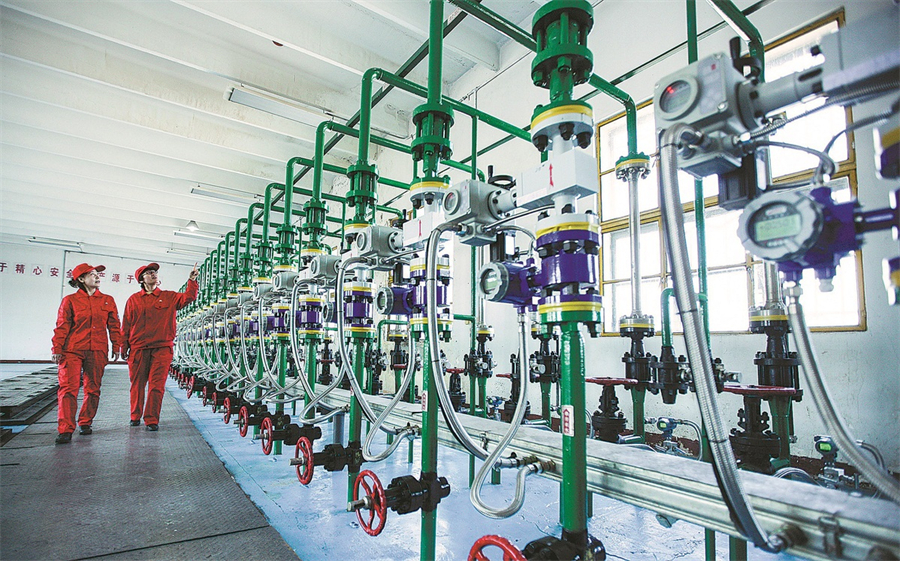
Digital technologies have revitalized management and production at the oilfield. [Photo by Zhao Yongan/For China Daily]
Chinese oil and gas companies are moving quickly in this direction. For example, China National Offshore Oil Corp is operating a smart natural gas project in the South China Sea that will help make the nation's offshore oil and gas production increasingly digital and intelligent. The project uses technologies such as the internet of things, big data and artificial intelligence to enable real-time monitoring and remote control.
Luo Zuoxian, head of intelligence and research at the Sinopec Economics and Development Research Institute, said, "Chinese companies are eager to explore smart oil and gas fields, but such development is still at an early stage."
To better maximize the value of digital technologies, Daqing Oilfield Co is constantly experimenting with new solutions. In addition to using drones and video surveillance systems for automatic patrols, the eighth operational area of the company's third oil production plant, where Shi works, is fully tapping data-driven technologies for smart production.
Efficiency improves
At a production management center at the plant, operators issued an instruction for the immediate flushing of an oil well 10 km away, after detecting abnormal data.
Li Guoxin, a worker at the plant, said: "In the past, we could only rely on experience to decide when to flush wells. But now, through real-time parameters, we know which well needs to be flushed-and when. This has greatly improved work efficiency."
An internet of things system tracks the real-time data of every well in the eighth operational area, which occupies 9.04 sq km and houses a total of more than 1,170 oil and water wells.
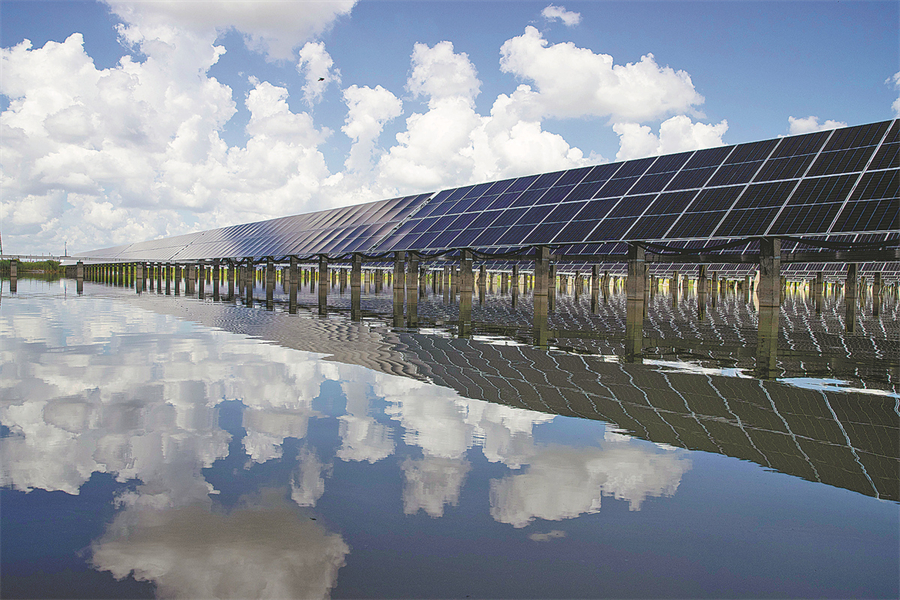
A photovoltaic power project operates in Daqing. [Photo/Xinhua]
Xu Liang, who leads a production team in the eighth operational area, said that after the system was launched, human supervision of oil and water wells was greatly reduced. The system immediately sends alerts when problems such as electrical equipment failures occur, Xu added.
Wu Yi, general manager of the eighth operational area, said the internet of things system is part of a digital platform built at the plant with investment of nearly 12 million yuan ($1.77 million).
This platform, which went online in January, is based on automatic data collection and analysis, radar-enabled real-time video monitoring, and patrol drones.
This approach is in line with a report by United States consulting company McKinsey & Co, which states, "The key to unlocking full digital transformation across the oil and gas sector involves both soft and hard automation technologies, as well as requiring more nimble work practices."
According to research by McKinsey, well construction and intervention typically account for 40 percent-and often as much as 70 percent-of an oil or gas company's capital spending. Furthermore, drilling and well activities are highly complex and take place in an environment with significant health and safety risks.
"But emerging technologies are bringing significant opportunities to improve all aspects of the operating model for wells, from streamlining core processes to strengthening front-line capabilities, and are improving the overall organizational model," the McKinsey report said.
Global energy companies are also using smart technologies for more-efficient production. For instance, to boost efficiency, US energy company ExxonMobil uses artificial intelligence technologies, from voice-activated virtual assistants to machine learning, to study and analyze vast quantities of data such as crude oil production rates.
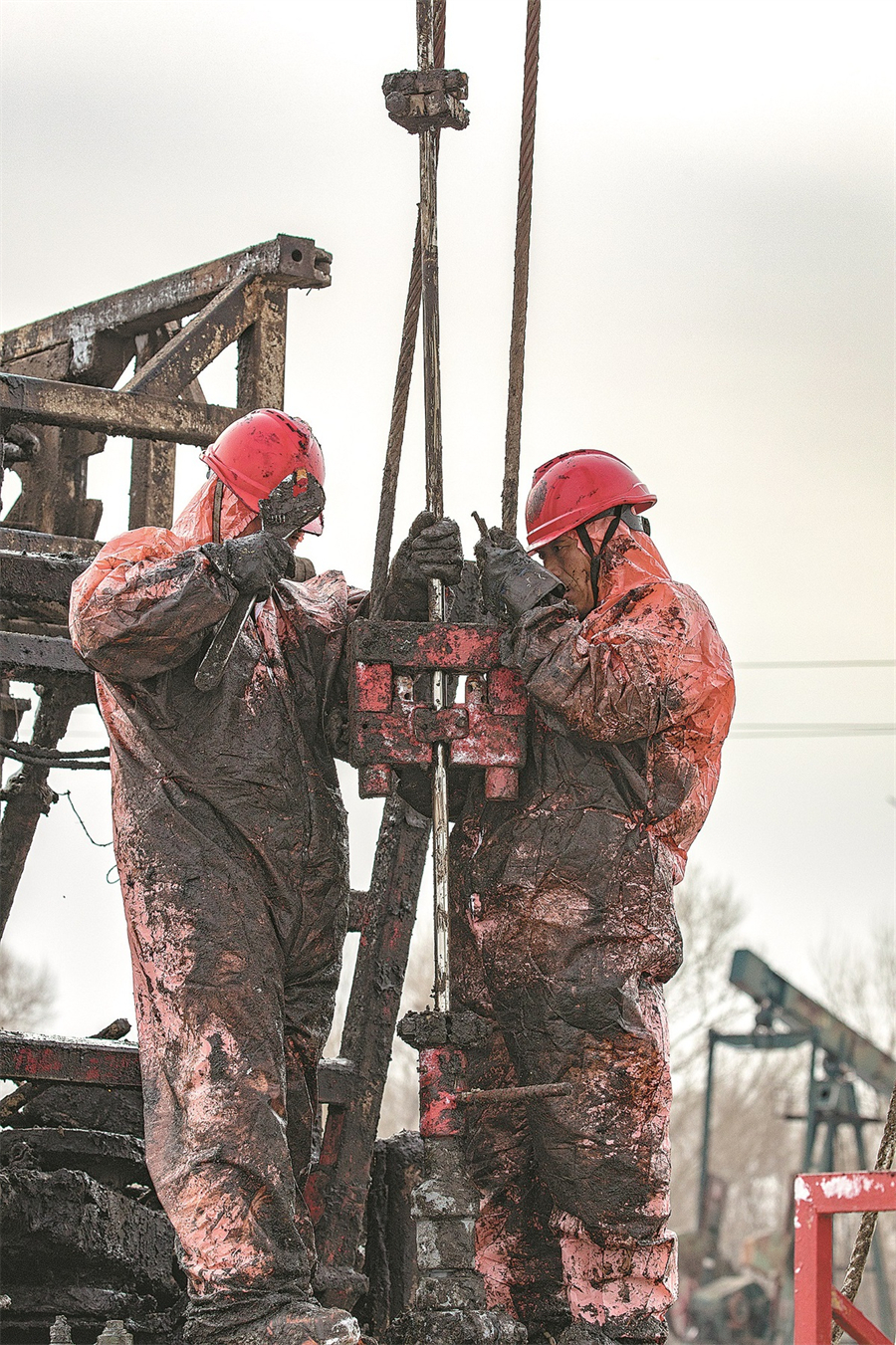
A pumping unit is checked at the oilfield. [Photo by Cheng Haiying/For China Daily]
According to a forecast from the consultancy MarketsandMarkets, the market size of the global digital oilfield industry is forecast to reach $32 billion by 2026, with a compound annual growth rate of 5.6 percent from the $24.3 billion recorded last year.
Eager to reap the benefits, Daqing Oilfield Co is expanding its internet of things system, which has already connected more than 38,500 oil and water wells. In three to four years, the system is expected to cover all the company's 120,000 wells, with more than a million data-collecting devices in use.
The widespread use of digital technologies to boost production efficiency also helps the oil industry deal with the challenge of talent supply and demand as oil companies push to expand production capacity amid falling employee numbers.
Wu, the general manager, said: "More than 150 people in our operational area will retire over the next five years. The efficient use of digital technologies has made it possible for us to deal with such changes and guarantee lean management without the need to recruit more people."
Digital transformation provides employees working in tough conditions with a more comfortable environment and also meets employees' expectations for a better life.
As a result, Shi, whose team has been freed from tedious patrol tasks in harsh conditions, now has more time for learning and training to improve his professional skills.
"Although I am 57, I still want to learn new things, just as the company does." Shi said.
Zhou Huiying contributed to this story.
























